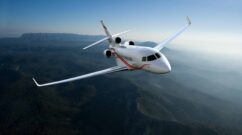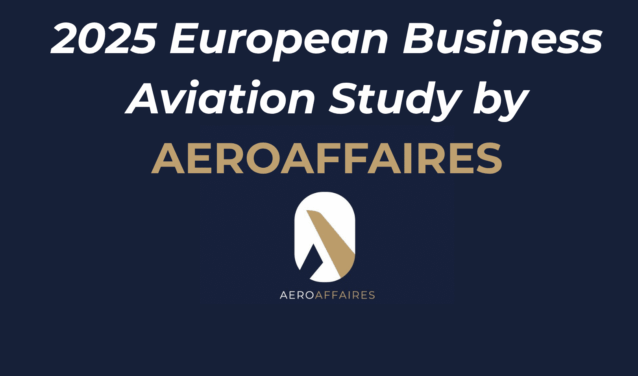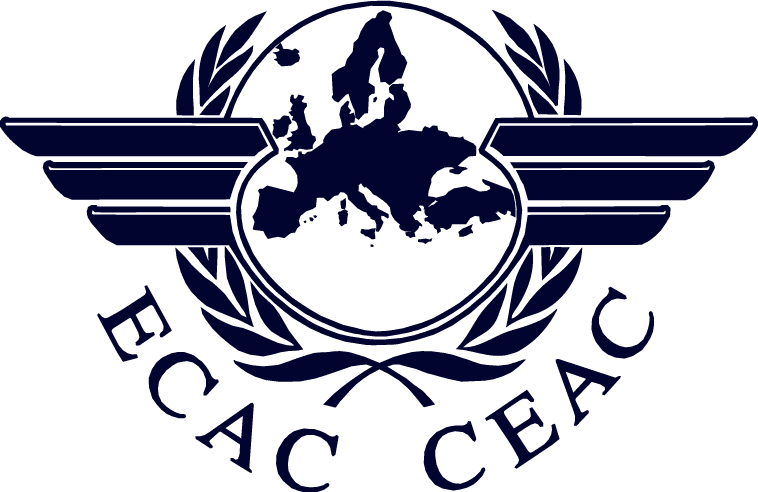An analysis by AEROAFFAIRES, European air broker since 1991
For over thirty years, AEROAFFAIRES has been assisting executives, companies and institutions with their private jet and helicopter travel needs.
Founded in 1991, the company has established itself as Europe’s benchmark air broker, certified for public passenger transport and recognized for its operational rigor.
This 2025 study provides a precise overview of the business aviation sector in Europe: market trends, taxation, technological innovations and environmental transition.
It is based on official data published byEBAA (European Business Aviation Association), Eurocontrol, EASA (European Union Aviation Safety Agency), ICAO (International Civil Aviation Organization) and Oxford Economics.
It is aimed at decision-makers, fleet managers and industry partners wishing to understand the structural changes reshaping European business aviation.
As an independent player, AEROAFFAIRES defends a demanding vision of air brokerage:
that of a business founded on compliance, transparency and environmental responsibility.
This study is an extension of this commitment, offering a clear, documented reading of the state of the market in 2025 and the outlook to 2030.
Macroeconomic introduction and market profile
Business aviation in Europe in 2025 is positioned in a post-pandemic economic context marked by a moderate slowdown, rising kerosene inflation and geopolitical tensions impacting business and luxury mobility. The sector contributes an estimated 100 billion euros to European GDP, generating over 370,000 direct and indirect jobs. Customers now range from multinational corporations to ultra-high-net-worth individuals (UHNWIs), with a notable expansion in services dedicated to aviation medicine and professional sports.
Overview of traffic in 2025 and strategic hubs
Business aviation traffic remains stable, with moderate growth (+0.3% for the year, according to Argus) and significant growth in certain segments in 2024-2025. Historic hubs such as Paris-Le Bourget, Geneva, Nice, London and Munich concentrate the majority of business traffic, accounting for up to 92% of volume in France. At the same time, new secondary hubs are emerging in Central and Southern Europe (Prague, Ibiza, Vienna, Malaga), benefiting from modern infrastructures and less constrained slots.
According to the Traffic Tracker of theEuropean Business Aviation Association (EBAA ) and consolidated data from Eurocontrol’s Network Manager, business aviation activity in Europe will remain stable in 2025, at a level close to that seen before the 2020 crisis.
The sector is now moving towards consolidation rather than growth, marked by fleet rationalization and route optimization.
The main hubs – Paris-Le Bourget, Geneva Cointrin, London-Luton and Nice-Côte d’Azur – still concentrate the bulk of movements, accounting for over 40% of total European traffic.
Pressure on time slots and parking capacity remains strong, particularly during major economic and cultural events, where simultaneous demand exceeds capacity.
Forecasts published by Argus International for 2025 confirm this stabilizing trend, with an estimated +0.3% annual increase in movements in Europe.
This dynamic reflects a maturity in the market: operators are prioritizing reliability, compliance and carbon footprint reduction over purely quantitative growth.
Source: EBAA
EBAA – Traffic Tracker
Eurocontrol – Network Operations Portal
Argus International – 2025 Forecast
Hubs and traffic geography
Europe’s major business aviation airports continue to play a decisive role.
Paris-Le Bourget remains the continent’s leading business airport, with 54,724 movements in 2024, or 92% of French business traffic.
Geneva, Nice, London and Munich complete the main network, while new hubs are emerging in Central Europe.
Source:
EBAA – Yearbook
Eurocontrol – Network Operations Portal
Economic role and added value
Business aviation plays an essential strategic role in connecting areas poorly served by scheduled transport, facilitating foreign investment estimated at over 120 billion euros by 2030. This sector is a pillar of European economic competitiveness, fostering a broad ecosystem ranging from aeronautics to specialized airport management.
Business aviation plays an essential role in Europe’s economic connectivity.
It links over 1,400 airports across the continent, nearly 80% of which are not served by scheduled airlines. This direct accessibility encourages trade, investment and territorial cohesion.
According to theOxford Economics study carried out forEBAA (European Business Aviation Association) and GAMA (General Aviation Manufacturers Association), the sector supports over 370,000 direct, indirect and induced jobs, generating added value estimated at 32 billion euros a year for the European economy.
These activities cover a broad spectrum: maintenance, crew training, ground services, aeronautical engineering and airport management.
Oxford Economics’ forward-looking scenarios point out that excessive restrictions on access to business aviation could reduce foreign direct investment by 120 billion euros by 2030, weakening regional ecosystems dependent on fast mobility.
Source:
Oxford Economics – The Socio-Economic Benefits of Business Aviation in Europe
EBAA – Industry Data
Environment, regulation and sustainable fuels
The sector is engaged in a structural transformation: the ReFuelEU Aviation regulation imposes a progressive quota of sustainable aviation fuel (SAF), up to 2% from 2025, with an ambitious target of 70% by 2050. Carbon offsetting is governed by CORSIA, with reinforced traceability requirements. The extension of the EU-ETS system to business aviation from 2025 onwards increases the pressure on operators – with rising costs and the need for rigorous reporting. At the same time, the limited availability and high cost of FAS remain the main obstacles to its widespread adoption.
3.1 The European framework
The European Aviation Environmental Report 2025 (EASA & Eurocontrol) gives a precise overview of the sector’s emissions and the progress made.
The ReFuelEU Aviation regulation sets progressive quotas for SAF (Sustainable Aviation Fuel), with a target of 2% by 2025 and 70% by 2050.
The two main obstacles to adoption remain the fuel’s limited availability and its still high cost.
Sources :
EASA – EAER 2025
European Commission – ReFuelEU Aviation
3.2 Carbon offsetting and international governance
Offsetting emissions from international flights is the responsibility of CORSIA (Carbon Offsetting and Reduction Scheme for International Aviation), run byICAO (International Civil Aviation Organization).
This scheme requires operators to declare their emissions and offset them with certified carbon credits.
Brokers and operators must ensure full transparency on the programs chosen and their traceability.
Source :
ICAO – CORSIA
4. Market and challenges 2025
In 2025, the European business aviation market is evolving in a context of structural tension.
Operators and brokers have to contend with the rising cost of SAF (Sustainable Aviation Fuels), the tax complexities associated with the lack of harmonization between member states, and the limited availability of airport slots on the busiest platforms.
Added to this are increased demands for regulatory compliance, transparency and traceability, imposed by both national authorities and corporate customers.
Faced with these constraints, industry players are adjusting their business models: modernizing fleets, integrating verifiable carbon offset solutions, digitizing brokerage and strengthening certification processes.
TheEuropean Business Aviation Association (EBAA ) and the General Aviation Manufacturers Association (GAMA) insist on the need for a realistic transition, reconciling the reduction of the environmental footprint with the economic viability of operators.
They call for a gradual approach, based on investment incentives rather than punitive logic.
Sources :
EBAA – Press releases and positions
GAMA – European Business Aviation Manifesto 2024-2029
IATA – Worldwide Airport Slot Guidelines
Innovation and digitalization
Business aviation has taken full advantage of technological advances in the transport and digital industries.Artificial intelligence now optimizes flight trajectories, crew schedules and predictive aircraft maintenance. The digitalization of customer service enables instant follow-up of requests, fluid management of flight documents and complete traceability of operations.
Blockchain is making its entry into the field of environmental compliance, offering unforgeable registers for the certification of carbon credits and the traceability of sustainable fuels(SAF – Sustainable Aviation Fuel). At the same time, cybersecurity and RGPD (General Data Protection Regulation) compliance are emerging as major operational priorities for certified operators and brokers.
Governance and comparative taxation
Taxation of business aviation remains fragmented in Europe.
In France, the Taxe de Solidarité sur les Billets d’Avion (TSBA) applies to private flights, in addition to VAT on associated services (ground services, catering, handling).
In Germany, Switzerland, Italy and Spain, regimes vary considerably, from partial exemptions to surcharges, creating competitive disparities within the European market.
These tax policies are, however, accompanied byincentives for the use of sustainable fuels and fleet modernization.
The positions taken by theEuropean Business Aviation Association (EBAA ) and the General Aviation Manufacturers Association (GAMA ) advocate gradual regulatory convergence, guaranteeing both competitiveness and energy transition.
Customer profile, uses and trends
The 2025 market is characterized by a clear evolution in usage.
Jet-sharing and fractional co-ownership are gaining in popularity, offering greater flexibility and cost control.
This trend reflects both rising operating costs and customers’ growing desire to reduce their carbon footprint.
The most frequent routes connect major business centers with top tourist destinations – Paris-Nice, Geneva-London, Zurich-Milan – illustrating the complementary nature of business travel and private stays.
Customers now expect a personalized experience, absolute confidentiality and a tangible commitment to social responsibility.
Looking ahead to 2030
By 2030, the industry will have to reduce its emissions by 55%, in line with the European Green Deal and the Fit for 55 legislative package.
Manufacturers are counting on the introduction of hybrid or 100% electric aircraft, such as the Lilium Jet or the VoltAero Cassio, currently in the certification phase.
This transition is accompanied by a strengthening of tax and regulatory measures designed to accelerate the adoption of clean technologies.
It could also redraw the map of European business hubs, in favor of regional platforms that are more energy-efficient and less subject to airport saturation.
Sources:
EASA: EUROPEAN AVIATION ENVIRONMENT REPORT 2025
AEROAFFAIRES’ strategic role
For several years now, AEROAFFAIRES has been committed to helping its customers achieve sustainable business aviation in line with regulatory developments. A pioneer in incorporating SAF into its operations, and curator of transparent carbon offset programs, AEROAFFAIRES also offers innovative digitalized solutions to optimize routes and reduce carbon footprints. These actions testify to our commitment to operational and environmental excellence.
Why choose AEROAFFAIRES
to hire a private jet ?
The strength of our network
AEROAFFAIRES is a network of more than 850 air operators with whom we work in complete confidence. Carefully selected, our partners are all certified in public passenger transport and holders of the Air Transport Certificate. AEROAFFAIRES also has a fleet of more than 20,000 aircraft, including 8,500 private jets, serving some 8,000 airports around the world.
Our focus: your satisfaction
We are proud of the trust that our customers have placed in us for 30 years now: it is our greatest achievement!
Follow us!
Subscribe to our newsletter: you will receive our private aviation news, our private jet and helicopter travel ideas and our best offers. Find us also on Instagram and Facebook.
Methodology
This study compiles data from the main European and international institutions: EBAA (Traffic Tracker, Yearbook), Eurocontrol (Network Operations), EASA (European Aviation Environmental Report 2025), ICAO (CORSIA guidelines), Oxford Economics (socio-economic impact), Argus (market forecasts), and GAMA (European manifesto 2024-2029).
Business aviation in 2025: conclusion
The year 2025 confirms the strength of business aviation in Europe, albeit in a demanding economic, regulatory and environmental environment. Sustainable performance remains a challenge shared between technological innovation, fiscal adaptation and social responsibility. A gradual, concerted transition appears to be the key to combining business connectivity, competitiveness and preservation of the planet, with AEROAFFAIRES as a trusted expert partner in this evolution.
Need a price estimate?
Contact AEROAFFAIRES
charter@aeroaffaires.com
+33 1 44 09 91 82

Our certifications
AEROAFFAIRES selects its aircraft to the highest standards of the aeronautics industry.



All sources quoted can be accessed in detail via :











